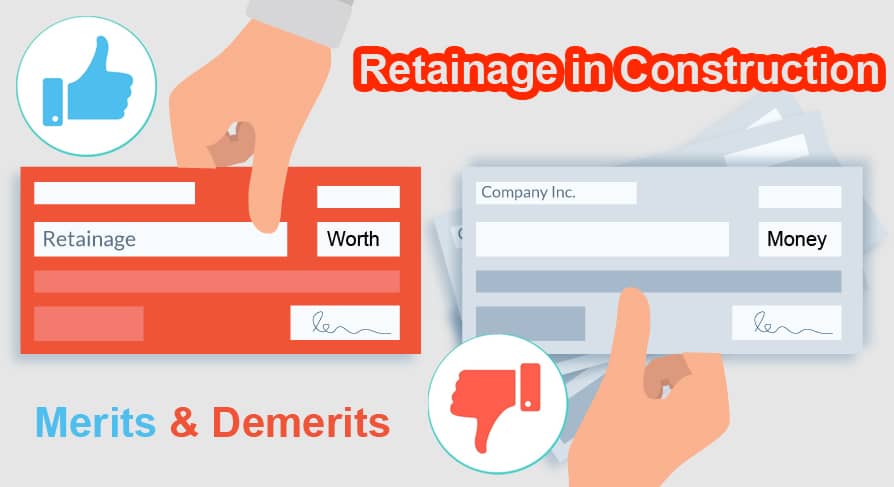Retainage in Construction : Merits & Demerits

During construction, the construction contract governs the project. This document is a written record of the agreements between the customer, contractor, and subcontractor. The contract specifies the materials to be used, the timeline for completion, and the construction method and payment date.
Customers may withhold a small amount of money until the work is completed in payment terms. This withholding is called retention, which becomes important in construction.
Define Retainage
A retainage is a portion of a contractor's fee that is withheld until the project is completed or specified in the contract.
In essence, retainage ensures that contractors and subcontractors fulfill their contractual obligations in a satisfactory manner. In the absence of retainage, a customer might pay an untrustworthy contractor their full fee upfront, at which point they might abscond with the money and abandon the project. A retainage serves as a reverse security deposit for the customer.
Retainage Workflow
A retainage percentage of between 5 and 10 percent is generally agreed upon by the parties before the start of the project, and stipulated in the contract. As the construction project progresses, progress payments are made periodically as fractions of the full fee.
An example of a retainage calculation would be $100,000 if the project price is $100,000, along with a 10 percent retainage. Each progress payment is subject to a 10 percent retainage by the customer or project owner. Each progress payment of $100,000 stipulated in the contract will be withheld by $10,000 by the customer.
Define Substantial Competition
As defined in the contract documents, substantial completion occurs when the work or a designated portion of the work is sufficiently completed so that the owner can occupy or use it as intended. A property has been substantially completed when the owner is able to move in or use it for its intended purpose, and retainage to the contractor is likely due.
Merits of Retainage
Financial Security
Money held in retainage allows the owner to preserve some funds that might have otherwise been wasted on an incomplete project when a contractor or subcontractor fails to perform their obligations. This money can now be used by the owner to hire another contractor to finish the project.
Proper Incentive
Construction contractors and subcontractors will be motivated to perform their work well if a significant part of the overall project fee is not released until the structure is usable.
Demerits of Retainage
Financial Hardship
Cash flow delays for contractors and subcontractors can be caused by prolonged retainage periods. Contractors and owners get priority in retainage arrangements which make subcontractors especially sensitive to this. Having to wait for trickle down retainage payments can be problematic for small construction companies with tight budgets.
Last Payment
Contractors may have to wait months or even years to collect retainage if the project is withheld until the end of the entire project, not just one contractor's work. You may not be paid until the general contractor has substantially completed building the overall home.
Too much Abuse
It is common for some customers to retain excessive retainages, especially in states where retention regulations are not in place. There may also be times when contractors impose a greater retainage on subcontractors than they do on themselves.
Wrapping it Up
The construction process is a continuous one, from beginning to end. Projects can go wrong & they can go right. As a result, the schedule can change over time. There are always need contingencies for completion. So, customers entering into construction contracts need assurances that their work will be completed satisfactorily.
Retainage offers many advantages that promote more efficiency and transparency in the construction industry for all stakeholders. You may face several problems when your construction contract includes a retainage provision.
For more information, please watch the following video tutorial
